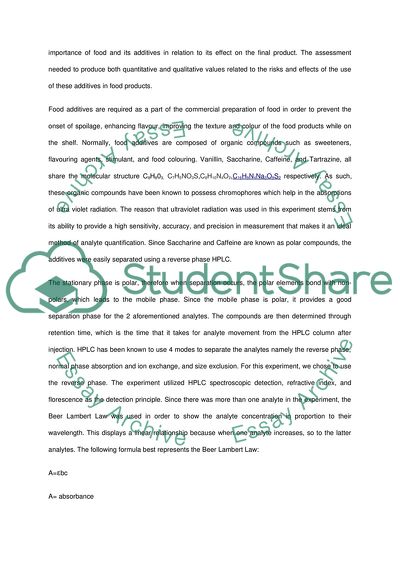Cite this document
(Determination of Food Additives in a Beverage Essay Example | Topics and Well Written Essays - 1500 words, n.d.)
Determination of Food Additives in a Beverage Essay Example | Topics and Well Written Essays - 1500 words. https://studentshare.org/chemistry/1865592-determination-of-food-addictives
Determination of Food Additives in a Beverage Essay Example | Topics and Well Written Essays - 1500 words. https://studentshare.org/chemistry/1865592-determination-of-food-addictives
(Determination of Food Additives in a Beverage Essay Example | Topics and Well Written Essays - 1500 Words)
Determination of Food Additives in a Beverage Essay Example | Topics and Well Written Essays - 1500 Words. https://studentshare.org/chemistry/1865592-determination-of-food-addictives.
Determination of Food Additives in a Beverage Essay Example | Topics and Well Written Essays - 1500 Words. https://studentshare.org/chemistry/1865592-determination-of-food-addictives.
“Determination of Food Additives in a Beverage Essay Example | Topics and Well Written Essays - 1500 Words”. https://studentshare.org/chemistry/1865592-determination-of-food-addictives.


